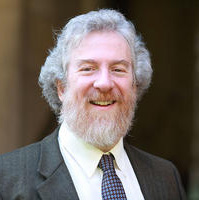Piyyutim: Poetry of the Soul

There is an exquisite irony that the same element of our liturgy—the traditional poems (piyyutim) within the siddur that are used in many of our services—is identified with both the greatest tedium and the most profound spiritual depths. We encounter Adon Olam and Yigdal every day and Lekha Dodi and El Adon every Shabbat. In the cycle of the year, there are the piyyutim for rain and dew (Geshem and Tal) associated with Shemini Atzeret and Pesah; Akdamut for Shavu’ot; and of course numerous poetic compositions adorn the liturgy of the Yamim Nora’im (High Holidays).
There are extensive discussions about whether it is permitted to insert these poetic additions into the core texts of our prayer book, and, ironically, many great authorities have taken the view that these poetic insertions are prohibited (for example, Arba’ah Turim OH 68 and Beit Yosef [ad loc.]). Clearly in this matter the “will of the people” (at least in the past) to include these piyyutim has prevailed over rabbinic analysis, and by medieval times and in modernity, a canon of piyyutim had become established in our liturgical tradition.
The halakhic sources address the question of insertion of piyyutim from the perspective of whether it is permitted to make any variation at all in the liturgical texts established in antiquity. Much of the medieval and modern scholarship on the texts of the piyyutim is (reasonably) concerned with establishing the layers of meaning found within these profound and subtle poems, many of which weave allusions from biblical, rabbinic, and mystical sources to illustrate and adorn a poetic message. Volumes of commentary have been published, and as only one example we should celebrate, an English translation of the substantial volume by Professor Reuven Kimmelman, devoted entirely to the text of Lekha Dodi is forthcoming.
There is little inquiry in the halakhic sources about the reason(s) why it might be desirable to include these poetic additions into our services; in fact, the current trend in many synagogues is to minimize (or eliminate) many of these texts. So I would pose a slightly different question: how does the addition of poetry impact our experience of community prayer? It would seem to me that the question then is all about meaning, spiritual experience, and engagement.
Rabbi Menachem HaMeiri, in his essay Meshiv Hanefesh, writes of the addition of piyyutim into the liturgy: “It seems to me that this is a wonderful custom, because it is natural that a person will be excited (engaged) by a new item . . . more than by the routine, customary texts. So because of this point, especially in our times, it is necessary that each person find something to engage and arouse themselves in each blessing.”
I would suggest that the Meiri frames this matter quite wonderfully in the structure of keva/kavanahthat we have discussed before, looking at the inevitable tension between fixed texts and the experiential needs and desires of each individual. The piyyutim that were under discussion in medieval times were, for those authorities, contemporary—even if we now see them as medieval. I therefore suggest, based upon the approach of the Meiri (and many others), that our experience of communal prayer can be greatly enhanced and adorned by the addition of poetry (and the diverse associated musical settings), but only if the selected poems are likely to be arousing and engaging to the congregation. It seems to me that the poetry of our own generation, whether in Yiddish, Hebrew, Ladino, English, or French is no less worthy of inclusion in our worship, and likely far more spiritually engaging for our communities than many of the intricate but sometimes arcane and inpenetrable compositions of earlier eras. It is greatly encouraging to see the array of contemporary poetry found in new liturgies published by the Rabbinical Assembly under the creative guidance of Rabbi Ed Feld and his team, as well as in other modern publications. I lament, however, that these poems are too often relegated to the margins or “anthologies of readings,” rather than placed authoritatively in the “main” texts of our prayers. Our predecessors took their own “modern” compositions and placed them in the middle of the ‘Amidah. Might we not follow in their footsteps?



